Ideas in Form · Multimedia Architectural Study and Educational Experience Protoype
2018.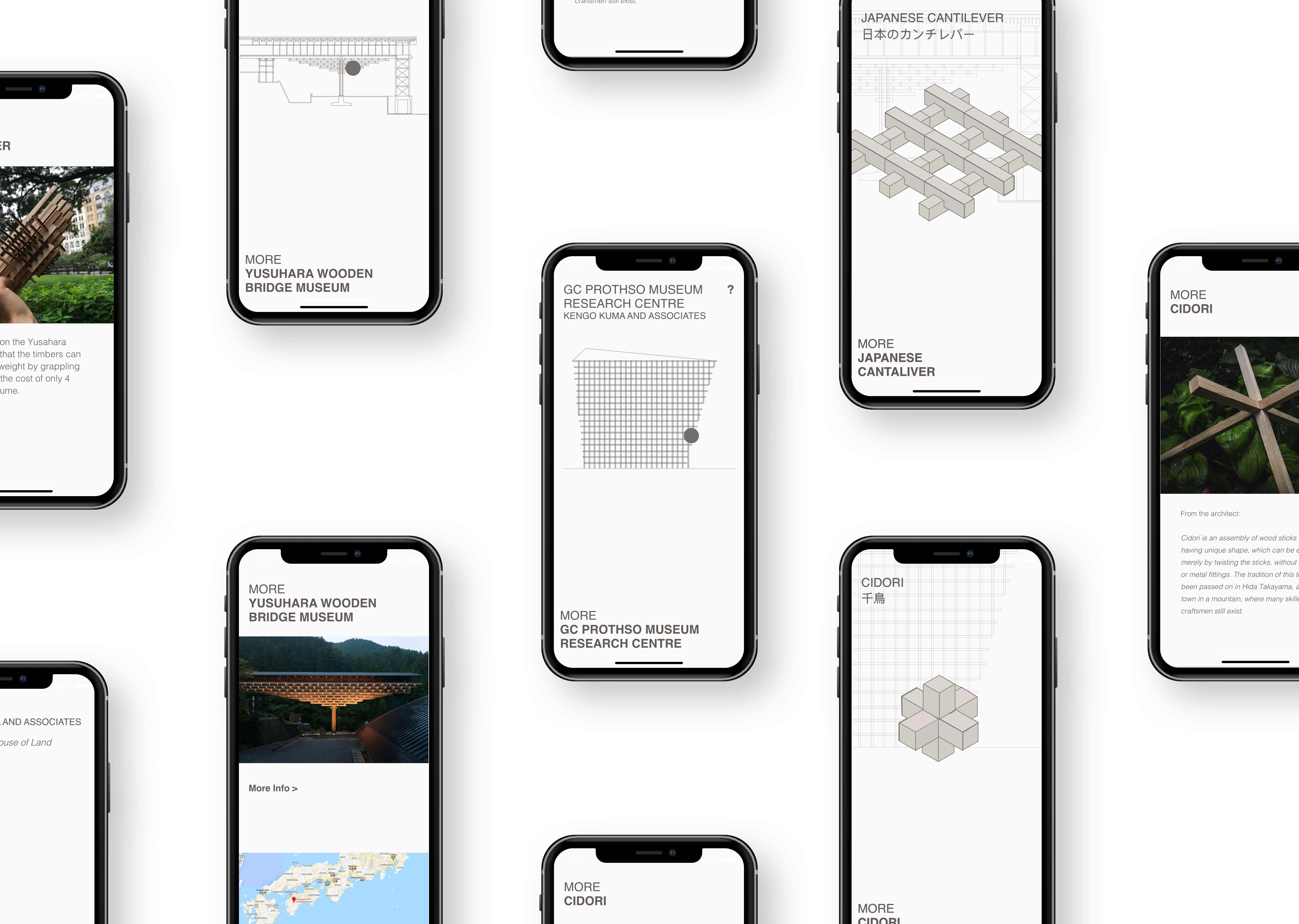
How do cultures use material to create enduring yet adaptive constructed spaces?
Ideas in Form is a short term investigative research project that explores how cultures, particularly the Japnanese, use the natural environment to inform and construct their architectural works. The project included background research, wood-working, and motion design, culminating in a digital protoype of an educative mobile experience regarding Japanese wood joinery.
Sketch Flinto Woodworking Research
Idea Evoking Japanese Architecture
The beginning of this concept rose from my passion with history and natural materials and my observations on the differences between Japanese and Western models of architectural design and urban growth. Additionally, I had recently become obsessed and inspired by the contemporary Japanese architect Kengo Kuma.
Japanese architecture tends to lean on organic materials, and structures in Japan are replaced more rapidly than in countries in Europe and North America. Yet despite this impermanence, the architecture of Japan evokes something deeply emotional and connective; it has a certain feeling and voice that isn’t found in many newer Western homes.
With this in mind, I wanted to learn more about what gives both traditional and contemporary (read: Kengo Kuma) Japanese architecture its voice, and then share this voice with those around me.
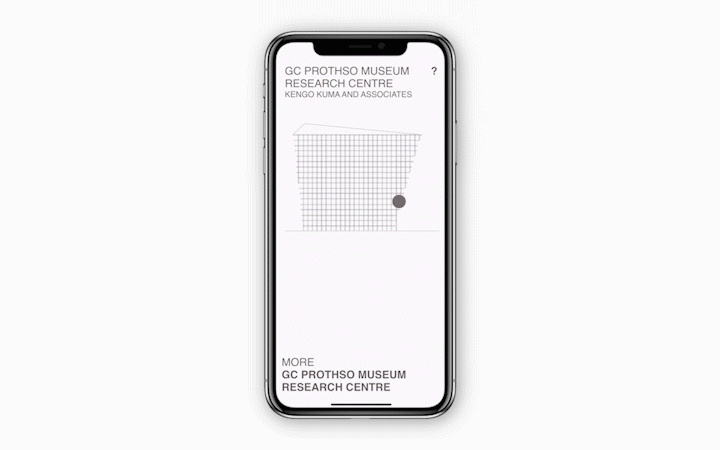
Background Research Traditional Japanese Architecture
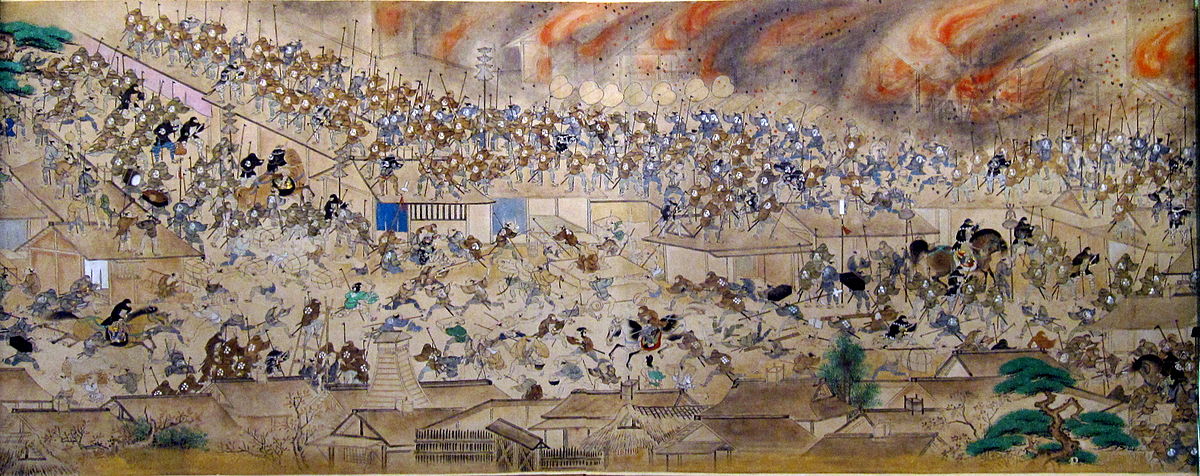
Fire and Wood
Natural events such as earthquakes are prevalent in Japan, and over history often lead to large fires. Why would Japanese architecture so often use natural materials such as wood if fire was so prevalent? Through the use of wood, an easily replenish-able, mobile, and generally lightweight commodity, Japanese cities were able to quickly rebuild after disaster.
This speaks to the values of the people, and how design can so beautifully illustrate deeper cultural touchstones, such as adapting with, rather than withstanding, nature. This is so different to the Western model of design, which uses heavy materials to control and tame the will of nature.
In Praise of Shadows
Jun'ichirō Tanizaki's 1933 book In Praise of Shadows has had a profound impact on me as a designer and how I view Japanese architecture. Tanizaki views the nuances and imperfections provided by natural materials in Japanese homes as the elements that provide joy and beauty. To quote: “The quality that we call beauty ... must always grow from the realities of life.”
Contemporary Study The Architecture of Kengo Kuma
Inspired by the findings of my previous research, I wanted to take a deeper dive into how contemporary Japanese architects utilise traditional themes and forms. I looked into the body of work of Kengo Kuma, renowned internationally for his respect for traditional Japanese craft and materials.
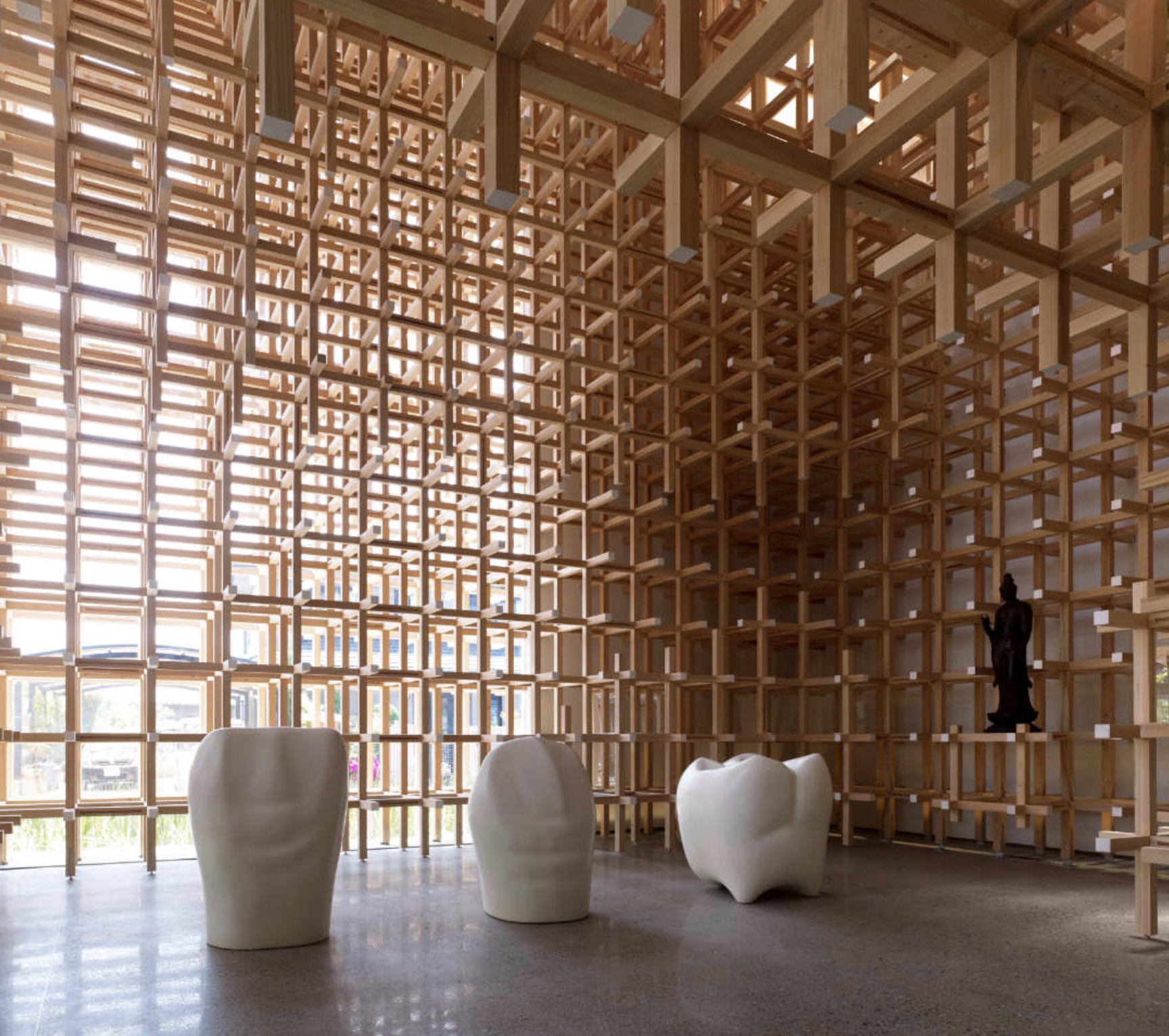
Quote From the Architect
This is architecture that originates from the system of Cidori, an old Japanese toy. Cidori is an assembly of wood sticks with joints having unique shape, which can be extended merely by twisting the sticks, without any nails or metal fittings. The tradition of this toy has been passed on in Hida Takayama, a small town in a mountain, where many skilled craftsmen still exist.
Interpretation
Kuma’s architecture pulls on the impermeability of traditional Japanese architecture, using repeatable, simple, sturdy yet easily dismantled forms to usher in an age or architecture that shows that organic materials can be used as reliable building blocks in making distinguished architectural structures. Efficiency of thought and production allow for stability of concept and purpose.
Material Study Cidori Joinery
Though Kuma's work is a study of repition of form, I was interested in first learning more about the actual joinery used for this project. Learning about how Cidori was constructed became the basis of my 3D study.
First, a micro-sized MVP was produced....
...Followed by a larger construction that provided me with a newfound respect for how certain Japanese joints were produced, and how these forms can be beautiful as individual sculptures, or used to produce much larger habitations.

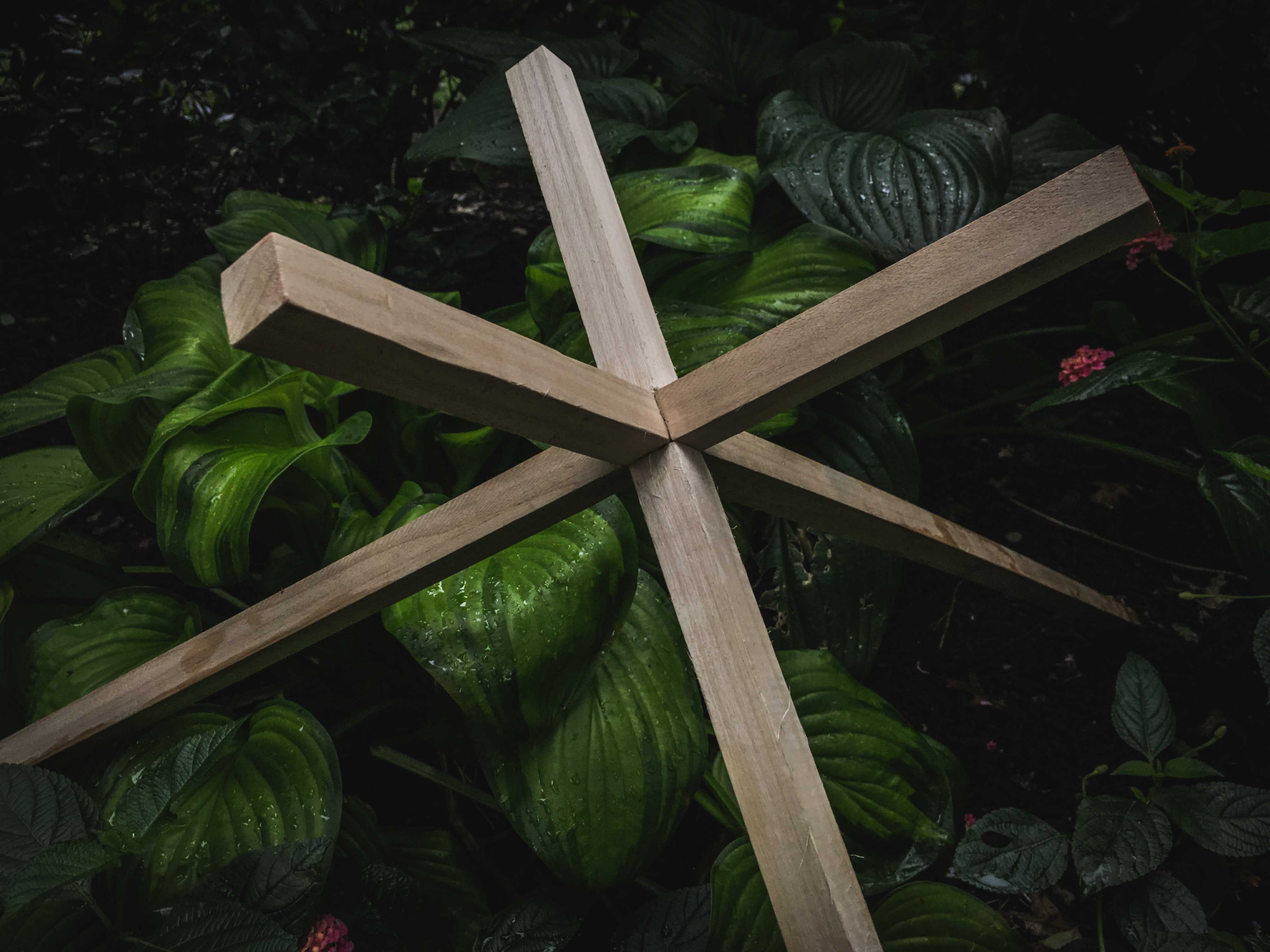
Recapping through Teaching An Interactive Study
This is a short exploration into how we can share the craft and technique of contemporary architects like Kengo Kuma who employ traditional Japanese construction techniques.
Japanese architecture is most effective when it creates a dialogue between structure and environment.
I wanted to play off this idea, and design a digital experience, creating 3D forms that exist in the 2D environment many of us are most comfortable with.
It was my goal to teach and inform through playful interaction and exploration, providing the audience with a visual way to come to respect the effortless yet technical building block of Kuma's (and Japanese Architecture as a whole) canon.

Motion was implemented in a way that evokes the artistic and architectural practices of Kengo Kuma, whilst also highlighting both the overall form and the simplistic construction of the structures.
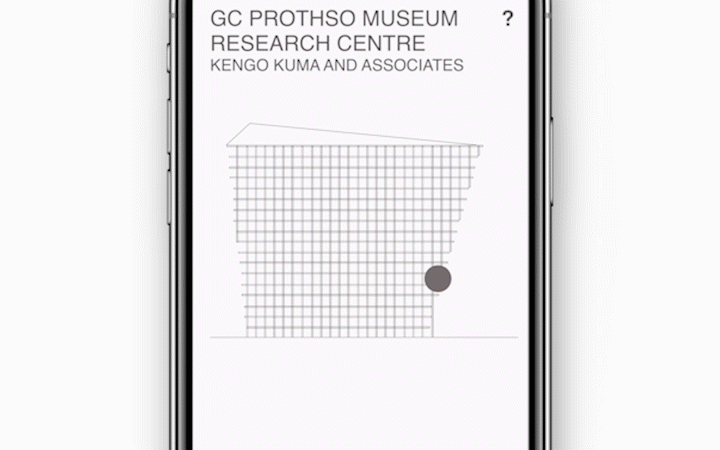
One of the things that was inspirational to me about Kuma's work is his use of traditional technique, but more importantly his subsequent repetition of form and construction. He reduces large-scale construction practices down into micro-units, which he then repeats to create complex and expansive architectual forms. I wanted to show how these complex units/joints could be quickly scaled up to create the large pieces that Kuma has built.
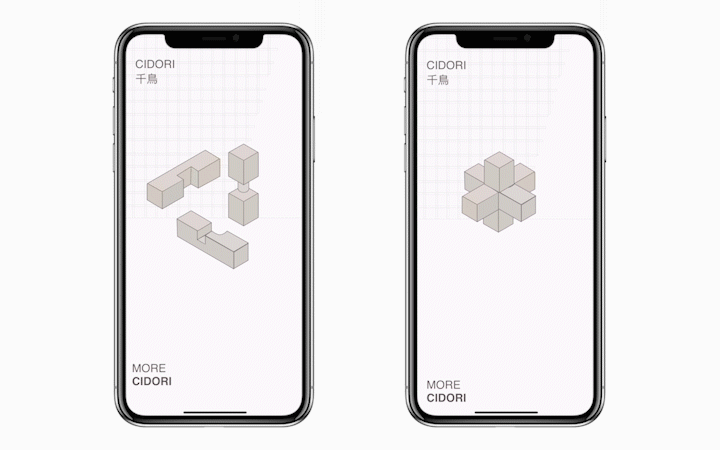
Additional portions of information provided granularity and grounded the illustrative forms in the lived world.
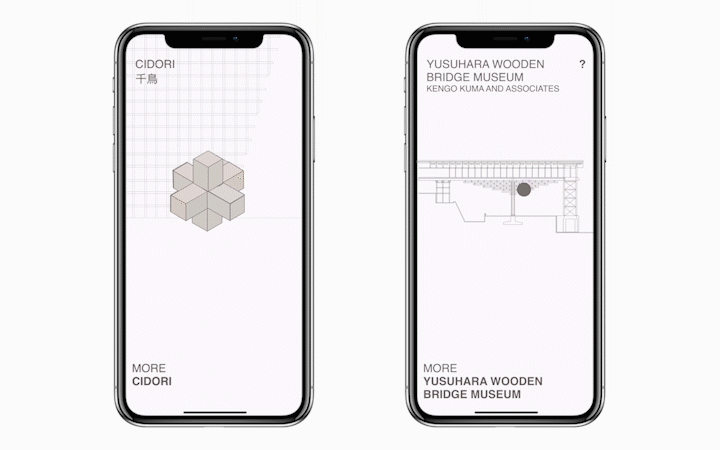
A walkthrough of the project can be seen in a screen recording below.